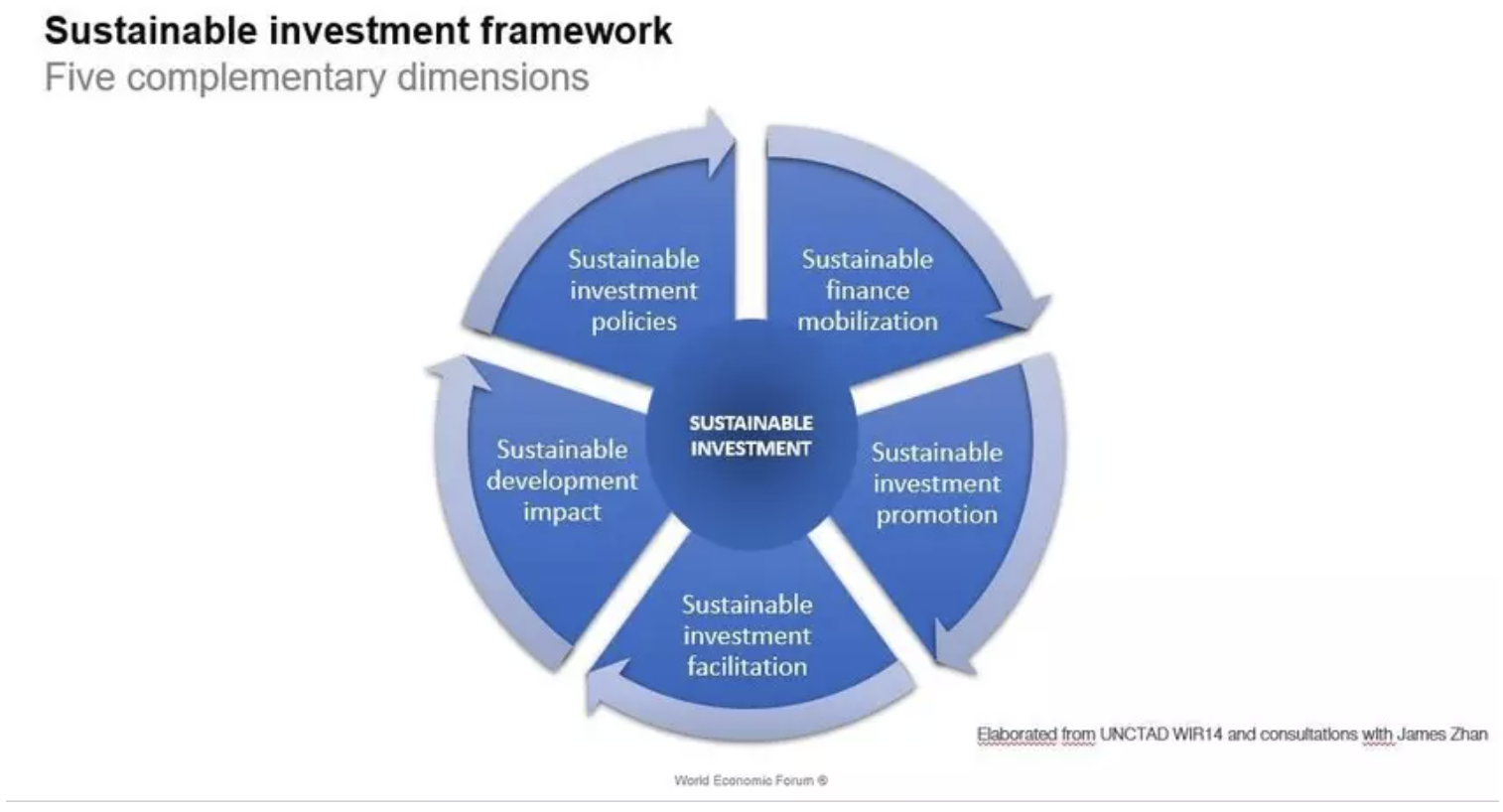Matthew Stephenson Policy and Community Lead, International Trade and Investment, World Economic Forum
This week, World Trade Organization (WTO) delegates are negotiating an international framework to make it easier for investment to flow between economies and lead to sustainable development.
These negotiations have grown in substance and speed since they were announced at the World Economic Forum in Davos in January 2020: Participating economies have grown to 106 from 70 over the past three years, and since March at least 11 economies have tabled new proposals.
As WTO delegates discuss what might be important measures to include, here are five provisions worth considering.
These suggestions are the result of learnings from five Forum-led country-level projects on sustainable investment facilitation, as well as the input of an advisory body of investment practitioners, co-organized with the International Trade Centre (ITC) and German Development Institute (DIE), helping identify measures likely to increase investment flows and their development impact in practice.
1. Create supplier databases with sustainability dimensions
Foreign firms are much more likely to invest in an economy if they know there are qualified domestic firms that can supply them with the inputs needed to successfully operate, from legal services to catering services, sheet metal to trucks. Supplier databases can provide this information quickly and accurately. In addition, supplier databases create linkages between foreign and domestic firms, and evidence shows that those linkages are key to maximizing development benefits for the host economy.
Supplier databases can include not only traditional information such as goods and services offered, production capacity and contact information, but also sustainability dimensions, such as the share of women employed or in managerial positions, training provided for employees, environmental protection or carbon offset activities, or certifications of supply chain management.
This can help foreign firms select domestic suppliers that operate according to Environmental, Social, and Governance (ESG) standards (and thus draw from over USD 1 trillion of ESG investment capital). In so doing, it can incentivize other domestic firms to shift operations to meet ESG standards to qualify for such contracts, creating a virtuous “sustainable investment circle.” The Forum is working with Cambodia on building such a database.

2. Adopt ‘silent yes’ mechanisms.
Investors and policymakers alike lament that often administrative procedures get stuck in the chain of approval. The simple fix is to adopt a mechanism such that approval is automatically provided after a certain set time has elapsed, absent active intervention. Of course, if officials require more time to examine a case, they can request it. However, the key is that the default – if they do not proactively request more time – is approval after the set time has elapsed.
Silent yes is in some ways the administrative equivalent of a ‘negative list’ approach, and officials have coalesced around the superiority of a negative list approach in terms of flexibility and efficiency. The former Deputy Prime Minister of Georgia credits the adoption of a ‘silent yes’ as instrumental to the country’s ability to move from 24th to 6th in the World Bank Group’s Ease of Doing Business (EBD) ranking between 2014 to 2018.
3. Adopt a risk-based approach to administrative approvals.
The WTO Trade Facilitation Agreement (TFA), which serves as inspiration for an investment facilitation framework, includes article 7.4 on risk-based customs procedures, focusing attention on high-risk consignments and expediting the release of low-risk consignments. The same logic can be applied to investment approvals, whereby authorities may wish to concentrate time and energy on high-risk applications and expedite low-risk applications.
The criteria for risk can be determined by each host government, whether based on sector, national security, or health and safety. But the important idea is that those investments that do not meet the high-risk criteria enjoy an expedited review. There is ample precedent for adopting a risk-based approach not only in the TFA but across regulatory good practice.
4. Create ‘investment alert’ mechanisms.
Catching complaints early before they metastasize into legal disputes can make an enormous difference in creating an attractive investment climate and facilitating investment.
Why? First, about 35% of investors reinvest all their earnings back into the economy, and so facilitating reinvestment is an important part of facilitation. Second, what current investors say to prospective investors about their experience in a certain jurisdiction is one of the most important factors in new investors’ decision making, and an alert mechanism can improve the experience of current investors. Third, once a legal proceeding begins, it is very hard to rebuild trust, and so this generally results in investor exit, the opposite goal of facilitation.
5. Provide greater support to investors that make a contribution to sustainable development.
Some investment directly helps the development goals of the host economy, such as creating a certain number of jobs, providing training and using a certain level of technology. Supporting these investors could take place through a combination of financial and non-financial incentives, for example, faster approval or response time.
These investors could be recognized in the form of a Recognized Sustainable Investor (RSI) designation, which Cambodia and Ghana are considering creating, for example. They could also be recognized through a sustainable investment stamp (SIS) that could be placed on the packaging, product, or marketing material of the good or service. Such markings can help certify the quality of goods and services, helping consumers make sustainable choices, and thus facilitating sustainable investment.

